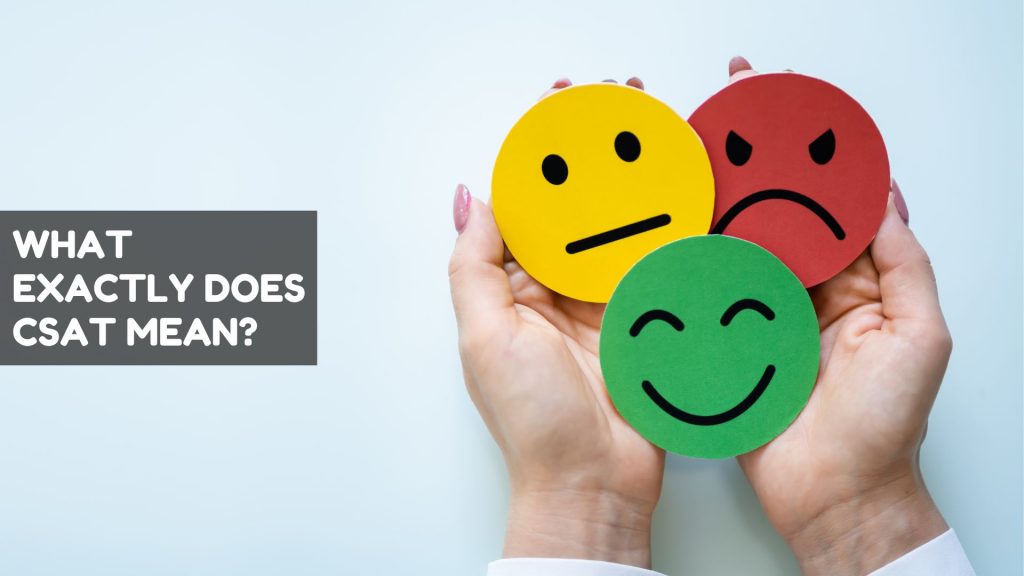How to Reduce Customer Churn
Glory-Anna Oshafi
One of the foremost priorities of many companies is growth — especially customer growth and retention. A study conducted by Harvard Business School records that as little as a 5% increase in customer retention can lead to as much as a 95% increase in profit generated.
Impressive, isn’t it?
The high costs of acquiring new customers only indicate that keeping the ones you already have happy and satisfied is essential. The more customers you lose, the less your business grows, and both revenue and profit suffer. CallMiner’s 2020 Churn Index reveals that U.S. businesses lose up to $136.8 billion yearly when consumers switch to a competitor business.
To be able to retain customers, you should have workable strategies in place to reduce customer churn. In this article, we will take you through an in-depth look into customer churn, how you can avoid it, and measures you can take to limit its effects on your business.
Let’s get into it.

What Is Customer Churn Rate?

Customer churn rate is simply the rate at which customers leave your business and possibly switch to a competitor’s. If you serve your customers a product or service, your customer churn rate would be how many customers stop subscribing to your product or service within a period, halting revenue in-flow from them.
A high churn rate means you’re losing a lot of customers. Lower churn rates signify you’re retaining more customers than are lost.
A few ways to determine how much customer churn your business is dealing with include:
- The number or percentage of customers you lose
- How much Monthly Recurring Revenue (MRR) you lose
- The percentage of MRR you lose
Here’s a customer churn example to make it clearer:
If, for instance, you started the year with 1500 subscribers to your digital product, but by mid-year, you have only 1350 subscribers left, your churn rate is 10%.
To calculate your customer churn rate, determine the number of churned customers over a period, divide that number by the number of customers you had at the beginning of the period, and multiply your result by 100.
Your customer churn rate is the opposite of your customer retention rate. It’s what’s left after finding out how many customers you have retained. Based on our example above, since the customer churn rate is 10%, then your customer retention rate is 90%.
What Does It Mean to Reduce Churn?
It’s common knowledge that acquiring a new customer costs five times more than retaining an existing one. But what you may not know is that you have a 60-70% success rate of selling to an existing customer, but you’ll only be 5-20% successful when you try to sell to a new one.
According to KPMG, customer retention is also the key driver of a company’s revenue source. See the infographic below for the others:

Consider this customer churn analysis:
Suppose you have 50 paying customers who subscribe to your product at $100 monthly. Losing one customer results in a $12,000 loss yearly! The higher the churned rate increases, the more loss you incur.
All these data and statistics point to one fact: Businesses have to do all they can to retain their customers. This is what it means to reduce churn — taking steps and putting measures in place to ensure you don’t lose your existing customers to your competition.
Sadly, 44% of companies place more focus on customer acquisition, while only 18% focus on retention.
What Are the Top 3 Ways a Customer Success Rep Can Minimize Churn?
For your business to reduce the customer churn rate, you first have to identify what causes customer churn. There are many reasons why customers choose to leave a business. This infographic gives a breakdown of the leading causes:

All the leading causes of customer churn somehow link back to the company’s customer success team. Having a proactive customer success team ensures that you are able to identify and solve problems before they affect your customer experience.
33% of customers can choose to leave a company simply because they’ve had one poor customer experience, according to this American Express study. So, how can your customer success representatives keep your customers happy enough to minimize churn?
1. Provide Timely Response
There’s nothing customers hate more than delayed responses when they need help from customer service.
If a customer is attempting to contact your business to make inquiries, it’s essential that there’s always a member of the team available to provide the answers they need. If they have onboarding or technical issues, attend to their queries by walking them through them from the start until it has been resolved.
Helping them resolve their challenges is a no-brainer way to keep them happy, and this is something that your customer success reps should be able to achieve easily. You can find out how successful your team is at resolving customer queries with efficient customer engagement tools.
2. Work with Customer Engagement Tools

Customer engagement tools help your customer success reps attend to and interact with customers wherever they are.
Working with an engagement tool like Juphy that provides a unified social inbox helps your customer success team streamline conversations and support requests from customers so that they can always keep customers engaged and never miss a thing.
Juphy eliminates the need to sign in to the different social platforms where your customers are active. These platforms are fully integrated into Juphy, so one sign-in to Juphy links you with all the spaces where your customers could send in queries and tickets from.
Its Ticketing features ensure that the team never misses any support request, and the Performance Reports feature helps them track how quickly they’re able to resolve messages, so they can improve their support strategies if necessary.
Boost your engagement strategy and reduce customer churn with this free trial from Juphy.

Explore CSAT’s role in e-commerce success, its measurement techniques, and strategies to optimize customer satisfaction for sustained growth. Read more now!
3. Conduct Customer Churn Prediction
For your customer success reps to successfully learn how to reduce churn, SaaS companies have to take steps to analyze and predict what might cause their customers to churn.
One major way to do this is to listen to what your customers are thinking or saying. Many customers leave a business when they think the business doesn’t care about them.
“Not caring” can manifest in various ways. For instance, if they think your prices are too high, experience bad customer service, or suffer a poor business relationship with the business.
Give them a chance to give your customer success reps feedback when you’ve provided them with a service. Hear their opinion, analyze it, and use it to predict possible reasons why they may decide to leave your business.
A few channels through which your customer success rep can elicit customer feedback include social media, website, emails, phone calls, and live chat.
How Can Firms Reduce Customer Churn and What Proactive/Reactive Measures Can They Take?

Firms also have a part to play in reducing customer churn. Here are four effective measures that can help.
Refocus Churn Reduction Efforts on Profitable Customers
Many businesses are looking to reduce churn and attempt to focus their efforts on a group of customers most likely to churn. However, industry experts suggest that this strategy may not be the best for maximizing profit.
Redirect your resources to retain the most profitable customers who are about to churn. If you offer incentives to a non-profitable customer who wants to churn, will they bring you any benefit? Unlikely.
Again, as you redirect your focus and efforts to profitable customers, ensure you identify the most effective strategy of re-engagement that they would likely respond to. Is it an email, call, or promotional offer that would be best?
Communicate Proactively
Don’t wait for your customers to reach out to you before engaging with them. Show them you’re invested in their experience with your product and service, and you want to find out how you can improve it to their liking or provide other relevant help.
For instance, if a new customer recently subscribes to your spa services but hasn’t come in for their massage, send them a friendly reminder inviting them to visit the spa. While at it, mention other spa services you offer that are not currently on their package.
By doing this, you bring your service back to mind while introducing them to other services they may find relevant for themselves or someone they know. This helps to keep them interested and reminded of what you can offer them.
Give Them a Reason to Stick Around
Incentives go a long way to have your customers hooked. Discounts, sales, promos, giveaways, and other packages tell your customers that you want to keep doing business with them.
Be strategic as you offer incentives to customers who you predict they’re about to churn. For instance, offering a discount to a customer whose subscription is about to expire can incentivize them to renew their subscription.
Offering a 30 – 60 day free trial period to a customer who’s about to churn for lack of preferred features can buy you some time to develop and perfect the feature if it’s already on your product roadmap.
Be Indispensable
Think of products and services you’ve never considered leaving because the brand has become so part of your life, making a switch will take you back a thousand steps.
This is what your firm should strive for when onboarding new customers. Take steps to become so synced with your customers that thinking about switching to a competitor never crosses their minds.
To do this, provide them with the best features, support, and services they need in such a way that they get hooked. Make it easy for them to navigate through and use your tools. Provide them with resources needed to resolve challenges if any.
Most of all, make your support team accessible so they’re never alone as they get familiar with what you’re offering. Don’t leave any step of the customer journey to chance.
How Do You Get Churned Customers Back?
Now that you’ve learned how to limit churn, how can you get customers that have been churned back?
- Find out why they churned. In this case, a simple customer survey may not be sufficient. You may need to call them to hear from them directly about what caused them to leave and find out if it’s something that can be resolved. In most cases, poor customer experience is the reason for churn, and customers who left due to price reasons are more likely to return.
- Continue to remind them of the value you provide via necessary channels. It’s unlikely that churned customers immediately cut all communication with your brand. If they notice your increased effort, incentives, more valuable features, or upgrades, they may have a change of heart and return.
- Keep up communication. If you are able to convince churned customers to return, don’t dwindle on the efforts you’ve made to get them back. Continue to use their feedback to improve their experience for long-term customer retention.
Conclusion
It’s not hard for many customers to churn, retaining them is the difficult part. With the right strategies and tools we’ve shared in this article, however, you can significantly reduce customer churn. One of the main ways to retain customers is always to ensure they’re engaged and attended to quickly. Tools like Juphy ensure your customer success team stays on top of requests and queries so no customer feels neglected.
Related Article – Customer Lifetime Value Guide

Customer Lifetime Value helps you convert your customers to loyal ones throughout their lifetime. Read more.

